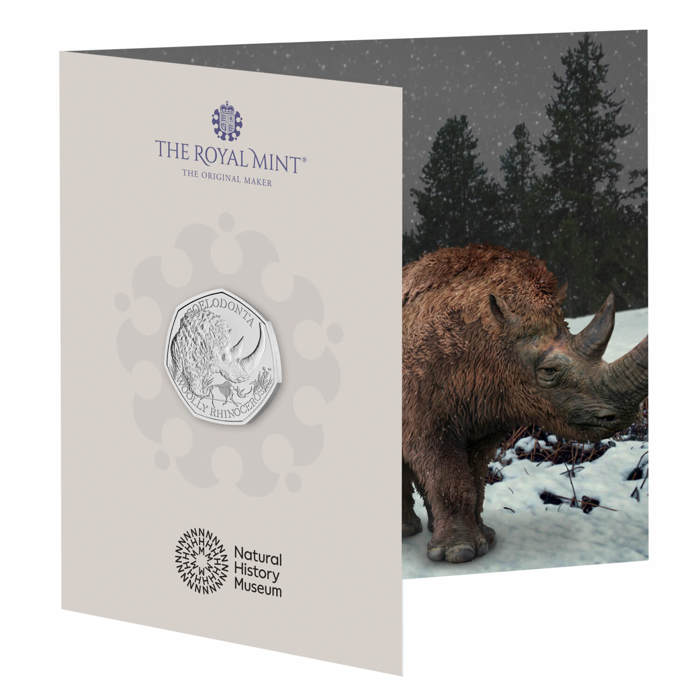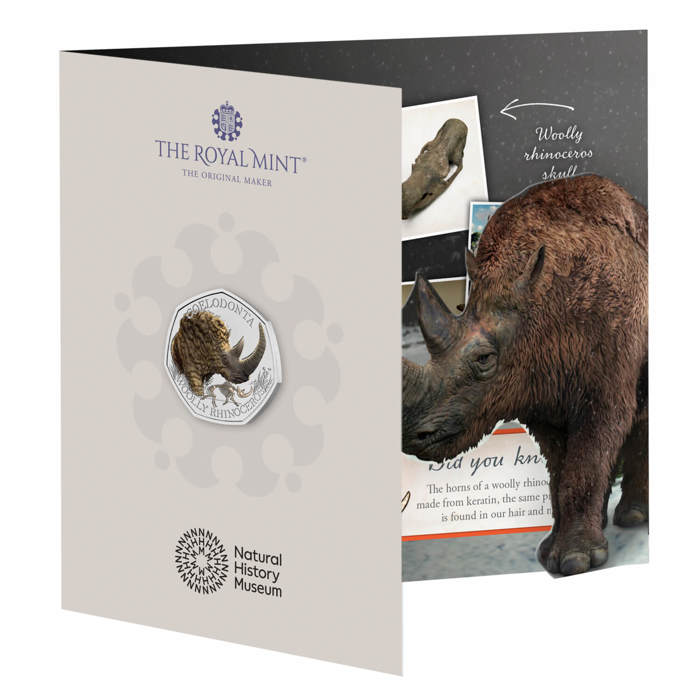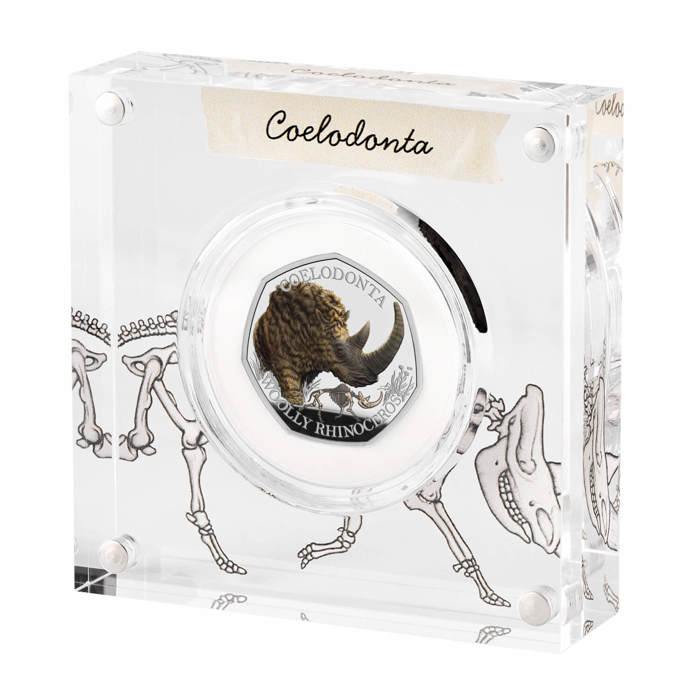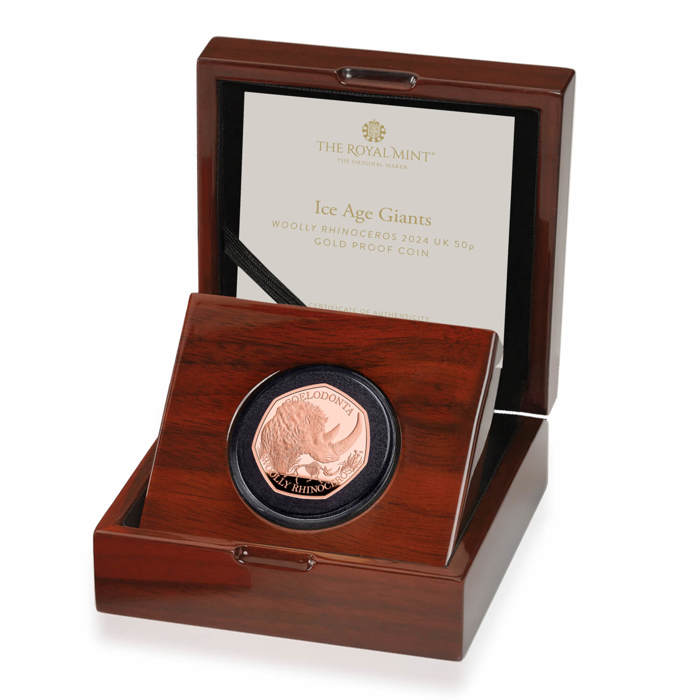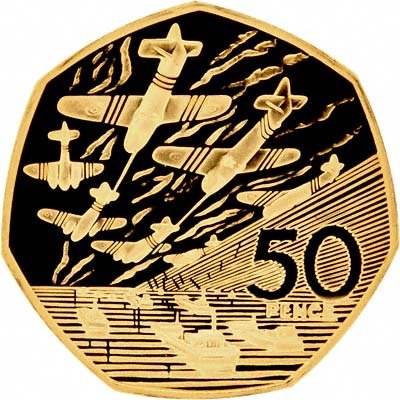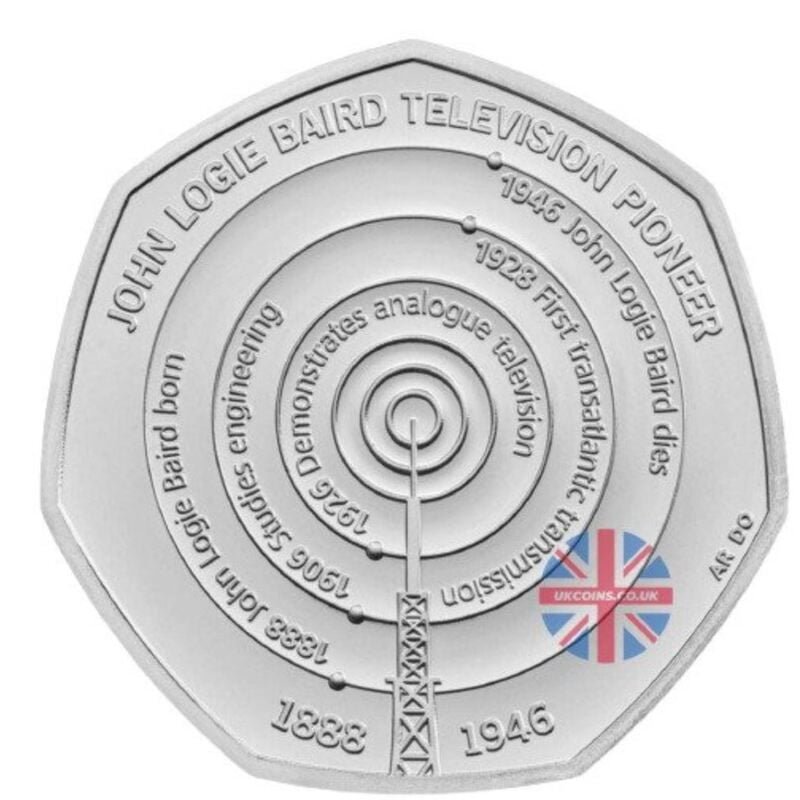Exploring the Woolly Rhinoceros 50p Coins from The Royal Mint
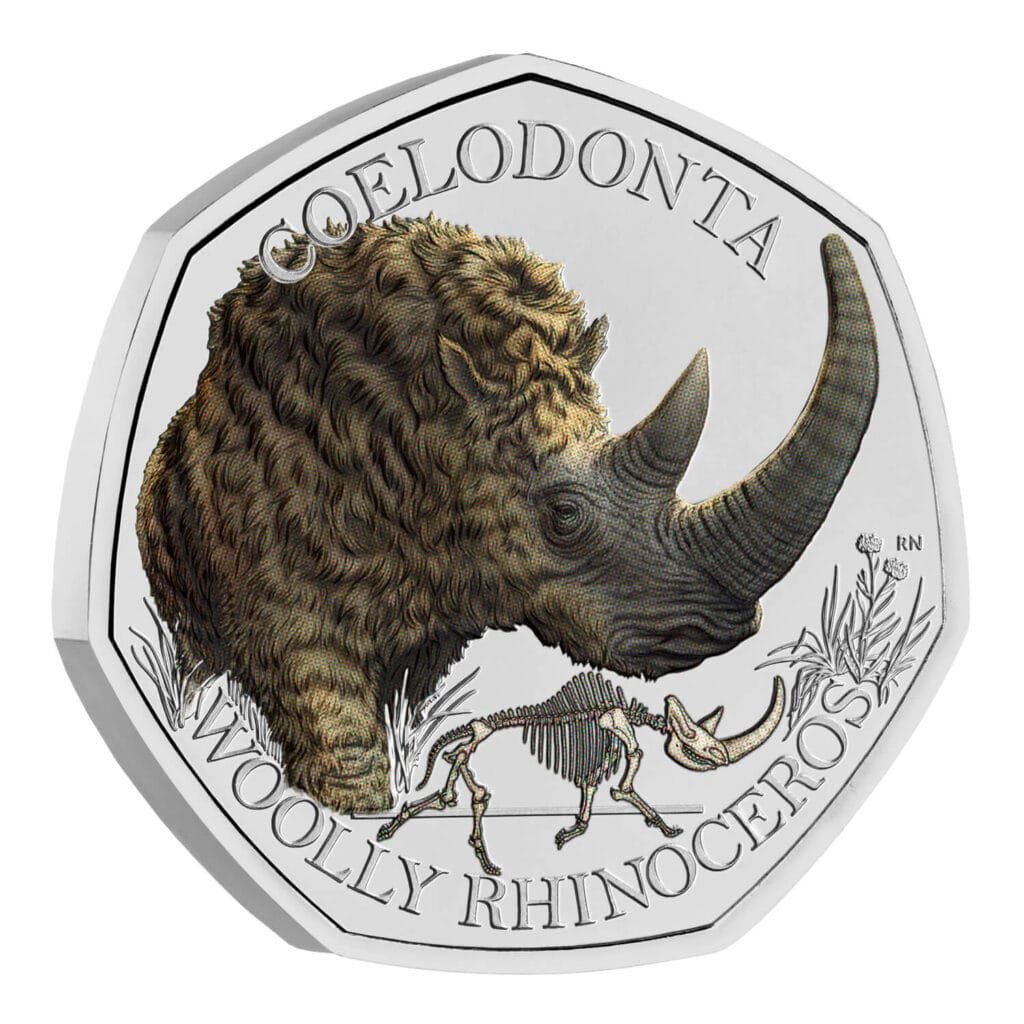
Buy It Now
What Coins Are in The Woolly Rhino 50p Collection?
Warning: simplexml_load_file(https://svcs.ebay.com/services/search/FindingService/v1?OPERATION-NAME=findItemsAdvanced&SERVICE-VERSION=1.13.0&SECURITY-APPNAME=JingLyu-shopifi-PRD-f1979435f-49003686&GLOBAL-ID=EBAY-GB&affliate.networkId=9&affliate.trackingId=5338651343&affliate.customId=mycode&itemFilter(0).name=MinPrice&itemFilter(0).value=3.00&sortOrder=BestMatch&paginationInput.entriesPerPage=6&paginationInput.pageNumber=1&categoryId=122486&keywords=Woolly+Rhinoceros+50p+Coins): Failed to open stream: HTTP request failed! HTTP/1.1 500 Internal Server Error in /home/u942982559/domains/ukcoins.co.uk/public_html/ebay/ebaytitle.php on line 43
Warning: simplexml_load_file(): I/O warning : failed to load external entity "https://svcs.ebay.com/services/search/FindingService/v1?OPERATION-NAME=findItemsAdvanced&SERVICE-VERSION=1.13.0&SECURITY-APPNAME=JingLyu-shopifi-PRD-f1979435f-49003686&GLOBAL-ID=EBAY-GB&affliate.networkId=9&affliate.trackingId=5338651343&affliate.customId=mycode&itemFilter(0).name=MinPrice&itemFilter(0).value=3.00&sortOrder=BestMatch&paginationInput.entriesPerPage=6&paginationInput.pageNumber=1&categoryId=122486&keywords=Woolly+Rhinoceros+50p+Coins" in /home/u942982559/domains/ukcoins.co.uk/public_html/ebay/ebaytitle.php on line 43
Warning: Attempt to read property "ack" on bool in /home/u942982559/domains/ukcoins.co.uk/public_html/ebay/ebaytitle.php on line 50
Oops, nothing found!
Prices shown here may not be final, check eBay for final selling price plus any applicable tax, import or shipping charges. These are not our products for sale. Please check all details directly with the eBay seller before committing to any purchase.
Introduction
Commemorative coins hold a unique position within the realm of numismatics, serving as a powerful medium for honoring significant historical events, cultural milestones, and the beauty of wildlife. Unlike standard circulation coins, these specially minted pieces are often produced in limited quantities, making them highly desirable to collectors and enthusiasts alike. Their significance extends beyond mere currency; they symbolize the values, achievements, and pivotal moments in a society’s history.
The Royal Mint, established in 886 AD, has a longstanding tradition of creating commemorative coins that reflect the rich heritage of the nation. Each piece is meticulously designed to convey a specific theme or message, showcasing artistry and craftsmanship that often becomes a part of the cultural identity it represents. By producing commemorative coins, The Royal Mint plays a crucial role in preserving historical narratives and celebrating the diverse aspects of British culture, wildlife, and achievements.
These coins serve not only as collectibles but also as educational tools that foster awareness about various themes, including wildlife conservation, monumental anniversaries, and notable historical figures. For instance, the Woolly Rhinoceros commemorative coin provides insight into the importance of this prehistoric creature and its place in the history of the Earth. Collectors and nature enthusiasts alike appreciate such pieces for their ability to encapsulate stories and impart knowledge about both the past and the future of conservation efforts.
In addition to their artistic and educational value, commemorative coins also contribute to the larger discourse on identity and memory within a culture. They offer a tangible connection to pivotal moments in time, prompting reflection on how societies evolve. Therefore, engaging with commemorative coins allows one to appreciate not only their aesthetic appeal but also the rich narratives they embody, thereby enriching our understanding of history and heritage.
The Ice Age Giants Collection
The Ice Age Giants collection is a remarkable initiative by The Royal Mint, designed to commemorate and educate the public about the magnificent creatures that dominated our planet during the Pleistocene epoch. This collection serves as a tribute to the extraordinary wildlife, including the woolly rhinoceros, which once roamed vast expanses of ice and tundra. Through stunning coin designs, the collection captures the essence of these prehistoric giants in a format that is both appealing and informative.
Other coins in the collection include the Steppe Mammoth and Giant Deer (not released yet) coins.
Just a reminder, if you have signed up for the subscription with The Royal Mint already to receive the 3-coin collection, don’t buy it again!
The primary purpose of the Ice Age Giants collection is to raise awareness about these incredible animals and their habitats, fostering a deeper appreciation for the natural history of Earth. Each coin in the series depicts a different creature from the Pleistocene epoch, highlighting their unique features and the environments in which they thrived. Among the featured species, the woolly rhinoceros stands out with its impressive size, distinctive fur, and massive horns, which were once adapted for grazing on tough vegetation in harsh climates.
Moreover, the Ice Age Giants Dinosaur Coins collection serves as an educational resource, inviting individuals of all ages to learn more about the woolly rhinoceros and its contemporaries. Each coin is accompanied by informational materials that outline the significance of these creatures in the ecosystem and the factors that contributed to their extinction. This approach not only enhances public knowledge but also encourages discussions surrounding biodiversity, conservation, and the importance of preserving our planet’s natural heritage.
By engaging with the Ice Age Giants collection, collectors and enthusiasts are offered a tangible link to the past, while also participating in a broader conversation about the environmental changes that have shaped the world we know today. In essence, this initiative is more than just a collection of coins; it acts as a platform for educating future generations about the awe-inspiring animals that once inhabited our Earth.
The Woolly Rhinoceros: An Overview
The woolly rhinoceros (Coelodonta antiquitatis) stands as one of the most notable prehistoric creatures that roamed the Earth during the Pleistocene epoch. This formidable herbivore was primarily adapted to harsh, cold environments, an adaptation reflected in its thick fur and substantial layer of fat, which helped it survive the frigid climates of Europe and northern Asia. Weighing up to 2,500 kilograms (around 5,500 pounds) and measuring approximately 3.5 meters (over 11 feet) in length, the woolly rhinoceros was a significantly imposing figure in its ecosystem.
Characteristic features of the woolly rhinoceros include its massive body, a pronounced hump on its back, and the iconic two large horns made of keratin. While the front horn could reach lengths of approximately 1 meter (3.3 feet), the size of these horns made them not only a tool for defense against predators but also a means for foraging through snow in search of vegetation. This behavior highlights the creature’s strong adaptations to its habitat, where grasses and shrubs were often buried under layers of snow and ice.
Compared to its modern relatives, such as the Indian rhinoceros and the African white rhinoceros, the woolly rhinoceros exhibited distinct features optimized for survival in icy conditions. Unlike the tropical or subtropical habitats preferred by their contemporary counterparts, the woolly rhinoceros thrived in the steppe-tundra that characterizes the glacial landscapes of its time. Its physical adaptations reflect a remarkable ability to endure extreme temperatures, showcasing how evolutionary pressures have shaped the lineage of rhinoceroses over millions of years.
Understanding the woolly rhinoceros not only sheds light on this fascinating creature but also emphasizes the environmental changes that led to its eventual extinction, allowing us to consider its legacy in the context of today’s biodiversity.
Historical Significance of the Woolly Rhinoceros
The woolly rhinoceros (Coelodonta antiquitatis) is a notable extinct species that played a crucial role in the Pleistocene epoch, a period characterized by dramatic climate changes and the evolution of various megafauna. This magnificent creature inhabited the grasslands and tundras of Europe and northern Asia, where it thrived alongside other iconic species such as mammoths and saber-toothed cats. Its adaptations, such as a thick fur coat and a layer of fat, allowed it to withstand the harsh cold environments of this epoch, making it a formidable herbivore within its ecosystem.
Archaeological evidence indicates that the woolly rhinoceros coexisted with early humans, who relied on various animals for nourishment, shelter, and tools. Remains of the woolly rhinoceros have been found at numerous paleontological sites, showcasing their widespread presence during the Pleistocene. Many cave paintings and carvings from this period depict these remarkable animals, emphasizing their significance in ancient cultures. Such representations reflect not only the intimate relationship early humans had with this megafauna but also their awe and respect for these powerful beings.
Furthermore, the woolly rhinoceros became a part of the storytelling and folklore of prehistoric communities. The utilization of its bones and horns for various tools points to its value in the survival strategies of early humans. In addition to providing sustenance, the woolly rhinoceros likely held symbolic meaning, embodying strength and resilience. Its extinction, likely due to a combination of climate change and overhunting by humans, serves as a poignant reminder of the fragile interconnectedness of species and their environments, highlighting the necessity for conservation efforts in contemporary ecosystems.
The Design Process of the Commemorative Coin
The design process of the woolly rhinoceros commemorative coin by The Royal Mint reflects a meticulous approach that embraces both artistic expression and historical significance. Initially, designers conducted extensive research on the woolly rhinoceros, examining its physical features and the ecological context in which it thrived. This deep understanding informed the artistic choices made throughout the design process. The aim was not only to create a visually striking representation of the animal but also to evoke the era in which it roamed, thus connecting modern audiences with ancient history.
Artistic choices were driven by a desire to encapsulate the essence of the woolly rhinoceros. The sculptors employed intricate detailing to highlight the iconic shaggy fur and robust physique that characterized this prehistoric creature. Additionally, the texturing utilized in the design serves a dual purpose: it enhances the aesthetic appeal of the coin and symbolizes the harsh environments that the woolly rhinoceros adapted to in the Pleistocene epoch. This level of detail allows the viewer to both appreciate the coin’s beauty and comprehend the subject’s historical significance.
Furthermore, the coin incorporates symbolism that resonates with broader themes, such as extinction and conservation. By honoring the woolly rhinoceros, The Royal Mint not only commemorates an ancient species but also underscores the ongoing relevance of wildlife preservation efforts today. The circular shape of the coin itself symbolizes continuity and the interconnectedness of past and present. Ultimately, the design process culminates in a product that is not only a currency piece but also a tribute to an iconic species, serving as a reminder of both the rich tapestry of natural history and the urgent need for conservation in our contemporary world.
The Woolly Rhinoceros Coin in Pop Culture
The woolly rhinoceros, an iconic symbol of prehistoric fauna, has captivated the imagination of many generations and finds itself woven into various aspects of pop culture. This ancient creature, with its impressive size and distinctive fur-covered body, has inspired numerous representations in films, literature, and art, effectively enriching the tapestry of contemporary culture. As interest in prehistoric life continues to flourish, particularly with advances in paleontological research, the woolly rhinoceros has become a significant subject, and the commemorative coin from The Royal Mint serves as a testament to this fascination.
In cinema, the woolly rhinoceros has often been depicted in films focused on prehistoric themes. These portrayals emphasize not only its physical attributes but also the environment in which it thrived, bringing to life a world long vanished. Movies like “Ice Age” feature characters resembling this majestic creature, appealing to both children and adults alike, thus promoting awareness of prehistoric life. Such films play a critical role in educating audiences about the woolly rhinoceros and generating public interest in its existence.
Literature, too, reflects this growing fascination. Books and articles exploring extinct species often highlight the woolly rhinoceros, delving into its behavior, habitats, and extinction. Additionally, the coin from The Royal Mint encapsulates this growing appreciation for prehistoric life, acting as a conversation starter and a collectible item for enthusiasts. In art, representations of the woolly rhinoceros continue to inspire modern artists, emphasizing its importance in the broader narrative of biodiversity and evolution.
Through these various channels, the woolly rhinoceros remains relevant in contemporary culture. The commemorative coin serves as a reminder of humanity’s profound connection to the past and the ongoing quest to understand the rich biodiversity that once roamed the Earth.
Where to Purchase the Woolly Rhinoceros Coin
The Woolly Rhinoceros commemorative coin, minted by The Royal Mint, serves as a remarkable tribute to this majestic prehistoric creature. Those interested in acquiring this coin have several options to consider. The primary source of purchase is directly through The Royal Mint’s official website. This platform usually offers the coin in various conditions, including proof, uncirculated, and possibly even limited editions. The pricing may vary based on the coin’s condition, rarity, or any included special features, such as unique designs or packaging.
Additionally, authorized dealers and numismatic shops often stock commemorative coins from The Royal Mint. It is advisable to confirm that the dealer is recognized by the mint to ensure the authenticity of the product. Online marketplaces, such as eBay or specialized numismatic websites, may also have listings for the Woolly Rhinoceros coin. However, it is crucial to exercise caution and verify the seller’s reputation to avoid counterfeit items.
For collectors looking to expand their collection further, The Royal Mint may occasionally release special editions or bundles that include the Woolly Rhinoceros alongside other prehistoric or themed coins. Following The Royal Mint’s announcements via their newsletter or social media channels can help collectors stay informed about promotional events or new releases.
In terms of pricing, it is worth noting that the commemorative coin’s market value may fluctuate based on demand. Therefore, paying attention to current trends and market analyses can be beneficial for potential buyers. By taking these steps, collectors and enthusiasts can successfully navigate the purchase options for the Woolly Rhinoceros coin, ensuring they obtain a piece of history that adds value to their collections.
Conclusion: Celebrating History Through Commemorative Coins
Commemorative coins serve as tangible reflections of history, artfully encapsulating significant moments, cultural milestones, and the essence of diverse themes. They carry with them a sense of nostalgia, illuminating the narratives that shape our understanding of the past. By collecting such coins, individuals become stewards of history, preserving stories that might otherwise fade from collective memory. Among these remarkable releases is the woolly rhinoceros coin, which finds its place within The Royal Mint’s Ice Age Giants collection. This particular coin not only celebrates the existence of this magnificent species but also fosters awareness and appreciation for the intricate tapestry of ancient wildlife.
Throughout time, the woolly rhinoceros has captivated imaginations, embodying both the grandeur and the fragility of life during the Ice Age. As we commemorate the woolly rhinoceros through this coin, we are reminded of the interconnectedness of all species and how past ecosystems have evolved into the biodiversity we see today. The coin serves as an educational tool, inviting discussions about conservation, climate change, and the importance of preserving our planet’s history for future generations. In doing so, collectors and enthusiasts alike can reflect upon their role in advocating for wildlife preservation.
In reinforcing this bond between history and currency, the woolly rhinoceros coin becomes much more than a mere collectible; it acts as a bridge to the past, instilling a sense of responsibility to cherish and protect our natural world. Through commemorative coins, individuals can engage with history in a profound way, sparking curiosity and igniting a passion for learning about the various ecosystems that once thrived. As such, commemorative coins like the one featuring the woolly rhinoceros play an essential role in celebrating, understanding, and preserving history, ensuring that the stories of ancient wildlife endure through the ages.
